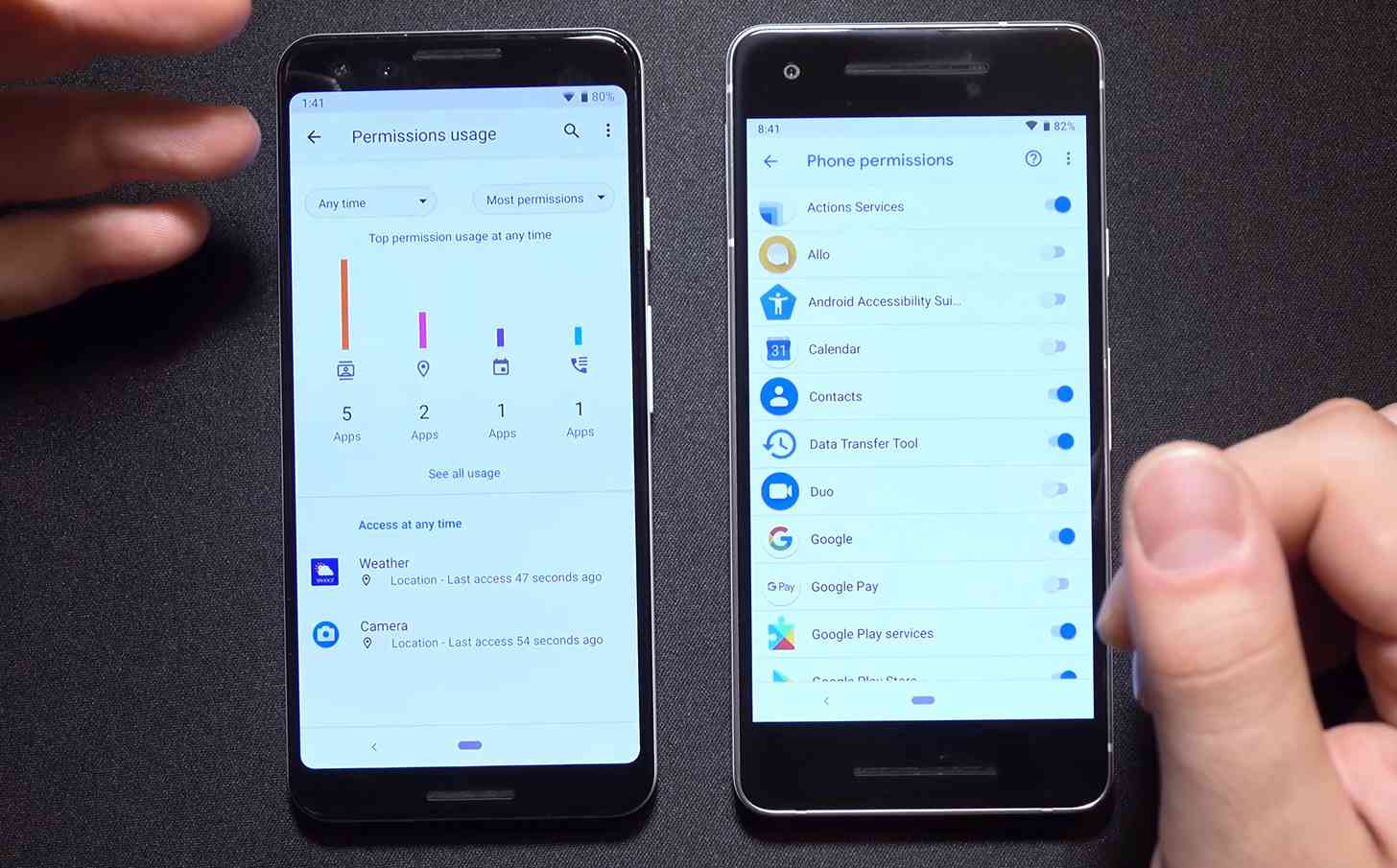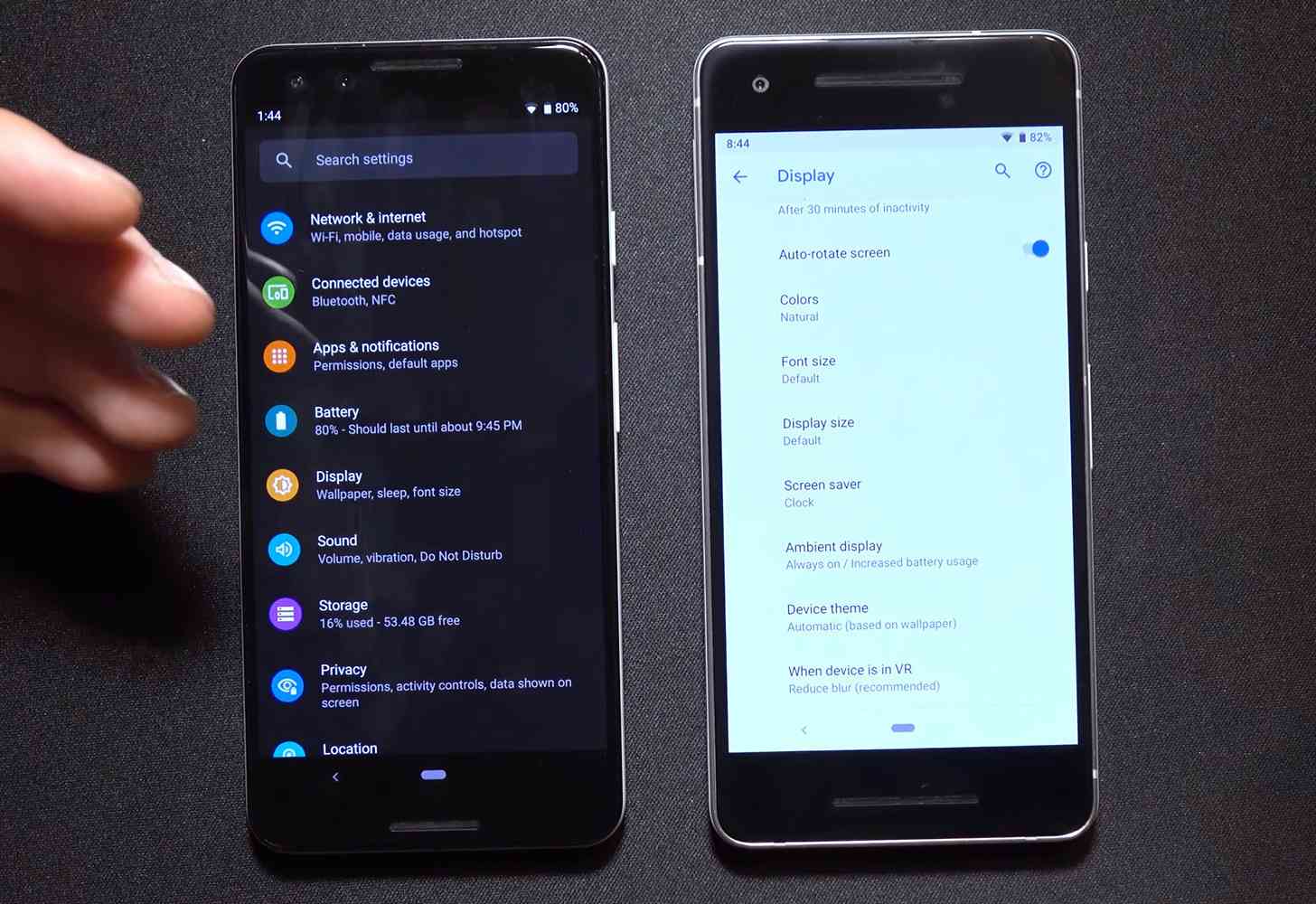Hungry for more Android Q news after those screenshots leaked yesterday? Good news, we've got some more for you.
A new video has appeared that offers a lengthy look at Android Q in action. The video comes to us from XDA-Developers and shows Android Q running on a Pixel 3 next to a Pixel 2 running Android Pie.
While this is an early build without any Google apps, there are still some interesting Android Q tidbits that we can gleam from the video. For example, you can no longer swipe left to get rid of a notification. Now swiping left will only show you the snooze and settings options, meaning you'll have to swipe right to get rid of a notification. Also of note is that Android Beam appears to be missing from this build.
The major focus of Android Q is privacy. There's a ton of new features related to permissions and user privacy, including an App Permissions section in Settings that's more clear about which apps are allowed to use a permission and which are denied. An app developer can also explain in this section why their app needs access to a particular permission.

Also of note is an "Allow only when an app is in use" option for permissions, which should help you ensure that an app isn't doing something you don't want it to in the background. There's an alert in the status bar when an app is using a permission that you can tap to see what's going on, like seeing when an app is using your camera and your location. And a new permissions usage screen will let you easily see how much each permission has been used recently and which apps used it.
Finally, the video offers a quick look at the system-wide dark mode that we got a peek at yesterday.

This video gives us a great peek at Android Q in action. While there's still time for Google to make some tweaks here and there, especially since Android Q likely won't launch to the public until late in 2019, the update is looking like a great one for privacy. The improvements to permissions make it much easier for users to understand what a permission is and which apps can use it, and the permissions usage screen will help users to understand which permissions have been heavily used lately.
What do you think of Android Q based on what we've seen of it so far?